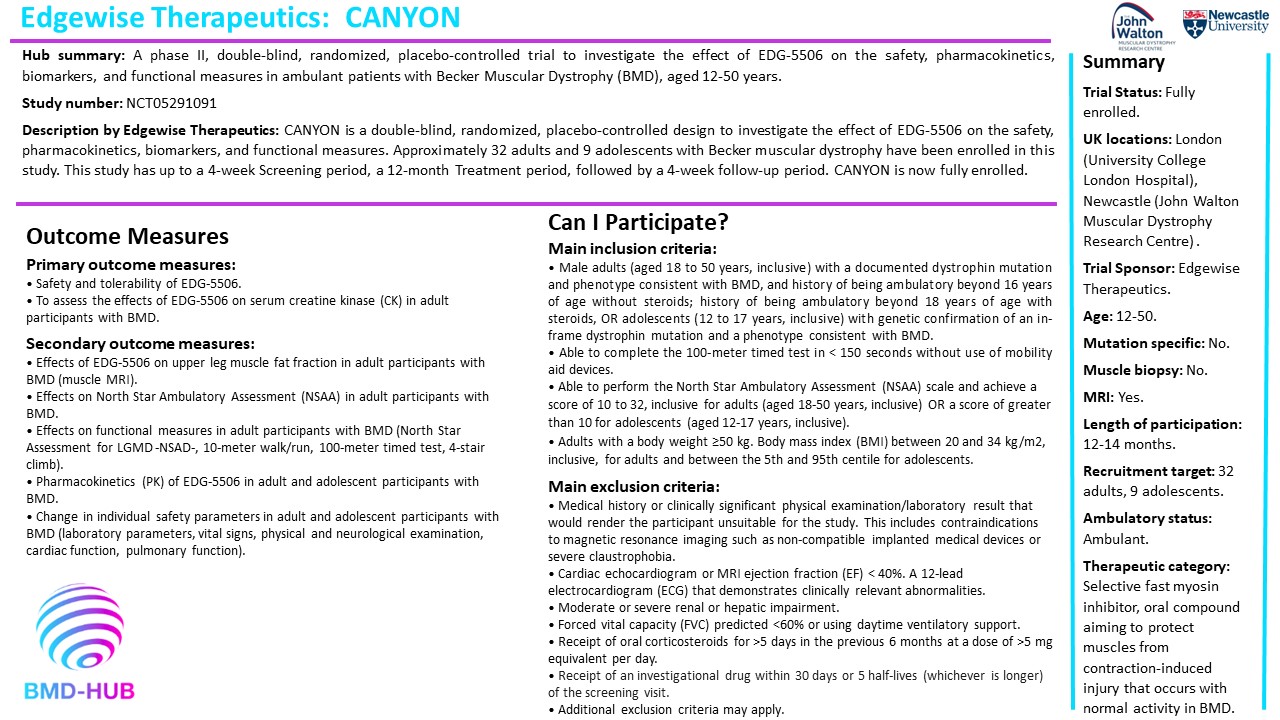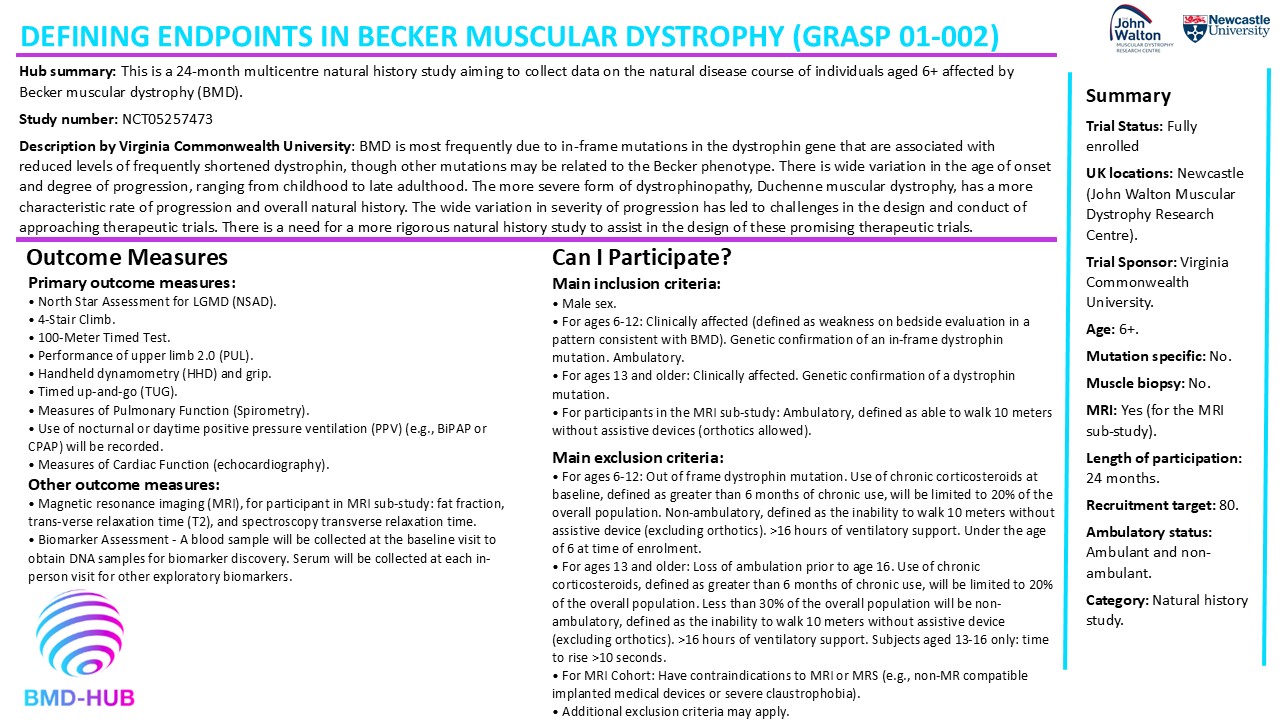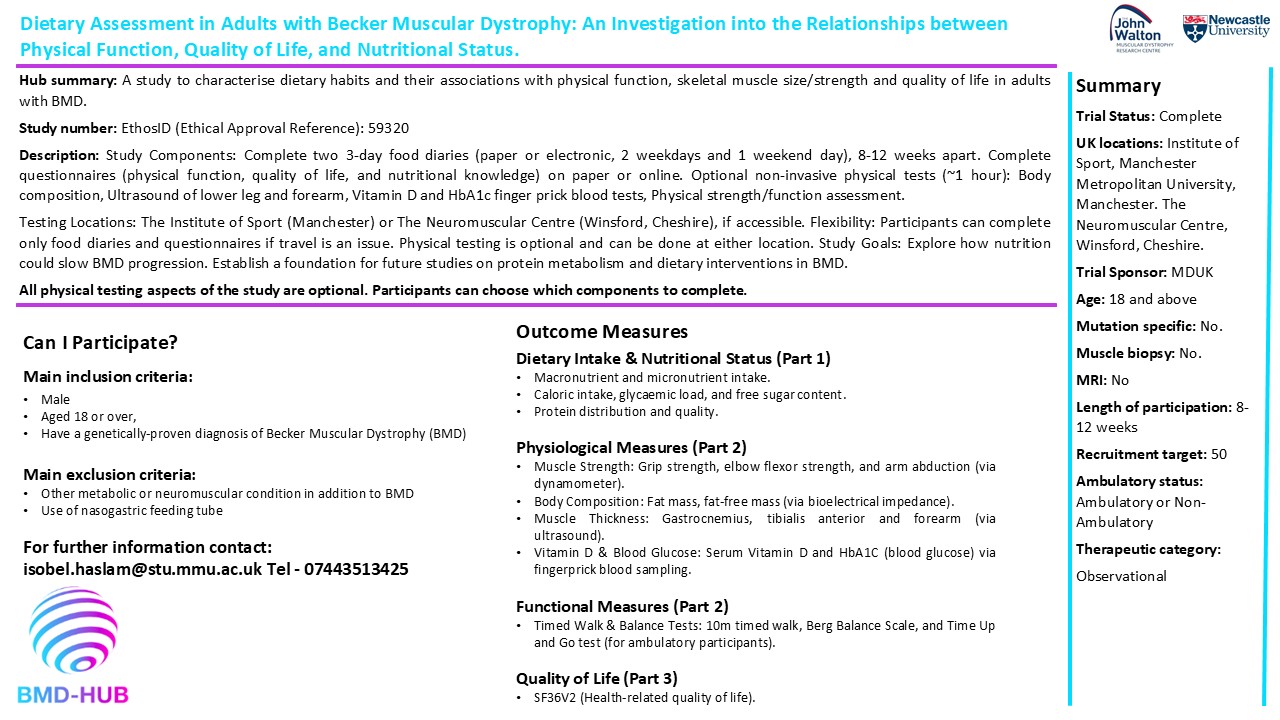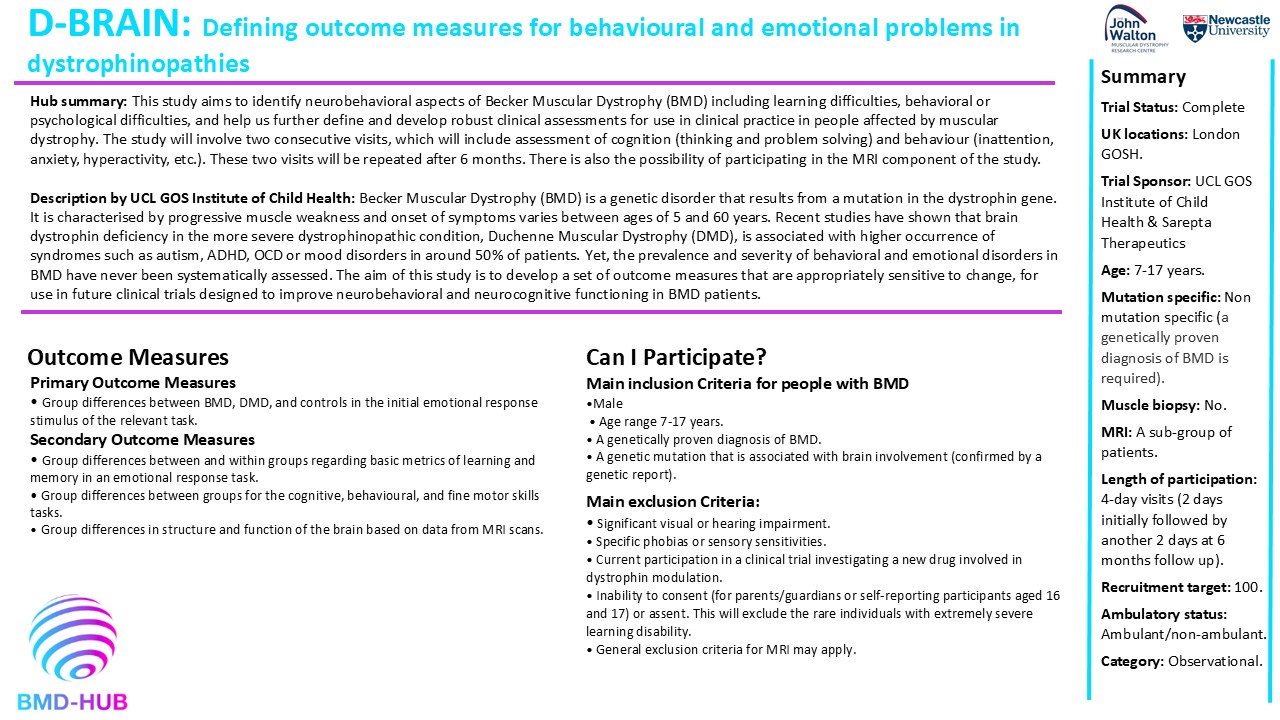What is the Clinical Trial Finder?
The BMD Clinical Trial Finder is based on the DMD Clinical Trial Finder developed in collaboration with Duchenne UK to give patients trustworthy and reliable information on existing and upcoming BMD clinical trials in the UK.
The Clinical Trial Finder has been designed for patients and caregivers, to be as accessible and comprehensive as possible. Every trial has information on outcome measures, inclusion criteria and an easy-to-understand lay summary. The information on each trial has been sourced directly from industry and hospitals and is verified by the BMD Hub management team.
Please note that the BMD Hub is not responsible for the direct recruitment of patients to trials. Although we work closely with sites to ensure the recruitment status for every trial is accurate and up to date, there may be a delay in updating the Clinical Trial Finder while the patient screening process takes place.
The BMD Hub is not promoting any trial or therapy. You should always consult your neuromuscular consultant before joining a trial.
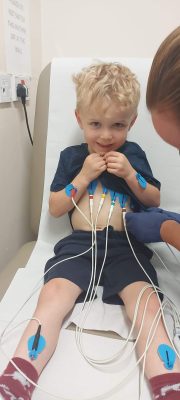
Overview and Updates:
Inactive Trials
About Clinical Trials
A clinical trial is a research study that explores whether a medical treatment, drug, procedure or device is safe and effective for humans.
Clinical trials are an important part of the evidence-based process for making new treatments available to patients. They produce the best possible data for health care decision-makers.
They are required by the Medicines and Healthcare Products Regulatory Agency (MHRA) which licenses new medicinal products. Doctors can only use drugs, procedures and devices with this licence to treat their patients.
Doctors, other healthcare professionals and patients also use the results of clinical trials when they are planning treatments.
Clinical trials follow strict scientific standards which protect patients and produce high-quality results.
All clinical trials are planned and organised extremely carefully.
They go through many scientific and medical reviews while they are being planned.
And the medical regulatory authority for their region must approve them before they can begin.
In general, this is how clinical trials work –
The data (or measurements) from all the patients receiving the trial treatment is collected together.
Then, it is compared to data from one of two sources:
- control patients – these are patients on the same trial who received a dummy medicine, such as a ‘sugar pill’, instead of the trial treatment
- the natural history of the disease – this is the measurements from many patients which has been collected over many years
Then, clinical trial doctors can see the difference between the measurements from patients who have received the trial treatment and the measurements from patients who have not received it.
This enables the doctors to judge if the trial treatment is safe and works better than existing treatments or no treatment.
If the results show that the trial treatment is safer or better, the doctors will apply to the Government to make the treatment available to patients. They will use the clinical trial data as evidence when they make their application.
All clinical trials must follow strict regulations set by the medical regulatory authority in their region.
So, when you are talking to the doctor about whether you should join a clinical trial, you will be told:
- what the trial is for
- how it will be organised
- how long will it take
- what medicines you or your son will be given
- how the medicines have to be taken
- what potential side effects might occur
- what measurements will be taken
- how the data will be used
For Becker Muscular Dystrophy, clinical trials measure patients’ ability to walk, stand or perform tasks.
Of course, doctors also measure safety and side effects.
The clinical trial results are all the measurements from all the patients on the trial.
(Patients’ measurements are often called ‘data’ by doctors and other health care professionals.)
Clinical trials can be designed as controlled studies or as observational studies.
They are different ways of investigating the effect of a treatment on patients.
Controlled trials
In controlled trials, doctors give ‘treatments’ to the patients on the trial and measure the effect of those treatments.
In trials the ‘treatment’ can be a drug, a device, a therapy or even just a questionnaire.
In a randomised controlled study, the assignment of the ‘treatment’ to the patient is controlled using chance by flipping a coin or randomly generating a number on a computer.
Controlled trials always include two or more groups. In a simple trial, data from patients receiving the trial drug will be compared with data from patients in a control group who are receiving either the existing treatment or a placebo.
A placebo is a substance that has no medical effect on the patient. It is usually a capsule, pill or liquid made of starch, sugar or salt. It looks the same as the trial medicine.
Doctors use placebos to ensure that any differences in the results for the treatment group and the control group are due to the active substance in the new medicine.
In open-label trials, both the researchers and patients know which groups are receiving the trial and control treatments.
In single-blind, randomised controlled trials, patients do not know if they are receiving the trial or the control treatment.
In double-blind, randomised controlled trials, neither the doctor nor the patient know which patients are receiving the trial and the control treatments.
If feasible, double-blind, randomised controlled trials are the best way to test a new treatment. They reduce the risk that trial results will be affected by the doctors’ bias or actions. For example, doctors cannot put all the patients who are most likely to respond to the trial treatment into the group who will receive it.
Observational studies
In an observational study, the doctor just observes patients and takes measurements from them. The patients do not receive any treatments.
For example, the doctor may be interested in comparing the movements of patients who have been taking steroids since they were five years’ old and those that have not. The doctor will only measure their movement and won’t give them any new treatments.
Clinical trials may run for many years. But that doesn’t necessarily mean you would be expected to participate for the whole time.
A trial may need to last for years because:
- it takes a long time to recruit enough people to take part
- it involves giving treatment for a long time
The trial may need to follow up with patients to get a reliable picture of the long-term effects of the treatment.
This is something you should discuss with the doctors running a clinical trial if you are thinking about joining it.
If you are interested in joining one of the clinical trials, you should contact us, the BMD Hub Coordination Team, at bmdhub@newcastle.ac.uk
Before agreeing to join a trial you must discuss the trial with your neuromuscular doctor.
Choosing whether to take part in a clinical trial is a personal decision. You should never feel pressured to take part.


